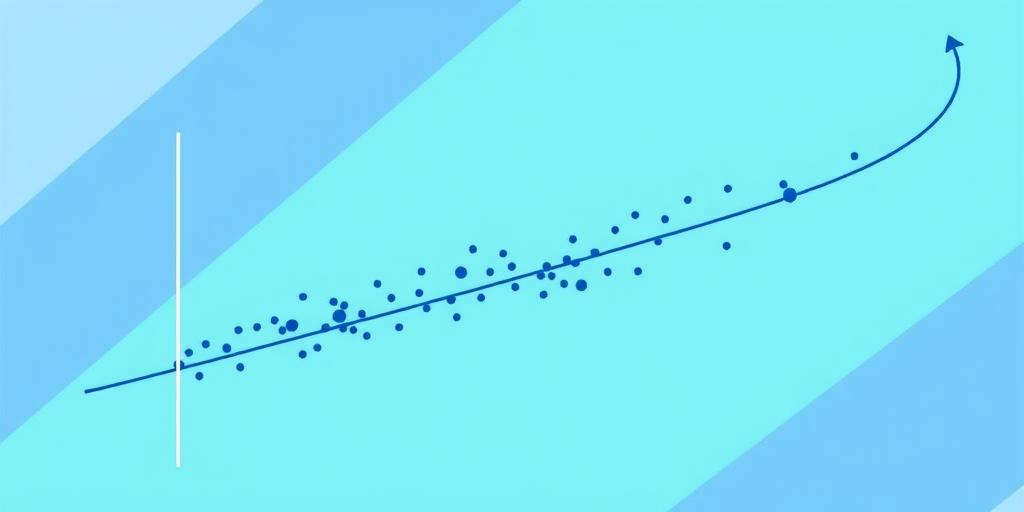Unlock the power of prediction with linear regression! This seemingly simple statistical method is a cornerstone of data analysis, capable of tackling complex real-world challenges. From predicting house prices to understanding stock market trends, linear regression offers a powerful tool for anyone looking to harness the insights buried within their data. But how does it actually work, and what are some of the amazing things you can do with it? Let’s dive in and uncover the secrets to using linear regression for your own real-world problems.
Understanding Linear Regression: The Basics
At its core, linear regression seeks to establish a relationship between a dependent variable and one or more independent variables. Think of it as finding the best-fitting straight line (or hyperplane in multiple dimensions) through a scatter plot of your data points. The equation of this line represents the predicted relationship, allowing you to estimate the value of the dependent variable given values for the independent variables. This seemingly simple concept has profound implications across numerous fields. Mastering linear regression is like gaining a superpower – the power of prediction. The beauty of linear regression lies in its simplicity and interpretability. Once you’ve fit your model, the coefficients associated with each independent variable tell you the strength and direction of its influence on the dependent variable. This allows for clear causal interpretations, a critical component for effective decision-making.
The Mathematics Behind the Magic
While the underlying mathematics might seem daunting at first, the fundamental idea is quite intuitive. The goal is to minimize the sum of squared errors (SSE), the difference between the actual and predicted values. This is accomplished through a process called ordinary least squares (OLS) estimation. Different algorithms exist to perform OLS efficiently, particularly when dealing with high-dimensional data, often using matrix operations for quicker calculations. Don’t let the technical jargon scare you; many statistical software packages and libraries handle the heavy lifting for you. You’ll focus on interpreting the results and applying your newfound predictive prowess to real-world problems.
Real-World Applications of Linear Regression
The versatility of linear regression is truly remarkable. It finds applications in diverse domains, consistently delivering valuable insights. This powerful tool can be used to understand, predict, and control many aspects of our world. This isn’t some theoretical exercise; linear regression is used every day to solve crucial problems in a range of industries. Let’s look at several key examples:
Finance and Stock Market Prediction
In finance, linear regression is instrumental in forecasting stock prices, modeling portfolio risk, and performing credit scoring. By identifying trends and relationships between various market indicators, analysts can make more informed investment decisions. Advanced techniques, such as time series linear regression, address temporal dependencies within financial data. These applications are crucial in making strategic financial decisions, mitigating risks, and identifying profitable opportunities in the volatile world of finance.
Sales Forecasting and Business Analytics
Businesses leverage linear regression to forecast future sales, optimize pricing strategies, and manage inventory levels effectively. By analyzing historical sales data and incorporating factors such as marketing spend, seasonality, and economic indicators, businesses can achieve better demand predictions, reducing waste and maximizing profits. Linear regression is a cornerstone of business analytics, providing essential tools for data-driven decision-making. With better forecasting, a company can have more accurate budgets and can optimize the use of resources. Using multiple regression to include multiple predictors increases forecast accuracy.
Healthcare and Medical Diagnosis
In healthcare, linear regression helps in predicting patient outcomes, identifying risk factors for various diseases, and personalizing treatment plans. By analyzing patient data, doctors can gain a more comprehensive understanding of an individual’s condition, leading to more accurate diagnoses and improved treatment strategies. This use of regression is quite important in predicting risk factors and potential outcomes related to the health of patients.
Beyond the Basics: Advanced Linear Regression Techniques
While simple linear regression provides a robust foundation, several advanced techniques enhance its capabilities. Regularization, for example, addresses issues of overfitting by penalizing large coefficients. This is particularly important when dealing with large datasets with many variables. Additionally, different variations of linear regression exist to handle specific data characteristics, such as logistic regression for binary outcomes and polynomial regression for non-linear relationships. Exploring these advanced methods opens up new possibilities for more accurate and nuanced predictive modeling, allowing for even better real-world applications. These more advanced techniques will help handle issues that can arise in a variety of data sets and lead to more efficient and correct answers.
Ready to harness the predictive power of linear regression? Start exploring the vast possibilities today! With a little practice and the right tools, you’ll be making data-driven decisions with confidence.




